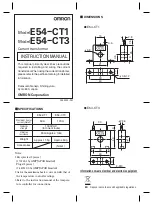
3
Installation (continued)
Figure 8.
Optional Mounting Kit 19254-1.
(Sold Separately)
Figure 9.
Electrical Connections.
Make connections to the Terminal Block, Conduit
Connector or the DIN Connector as shown below in
Figure 9. “Electrical Connections”.
Pneumatic Connections
Clean all pipelines to remove dirt and scale before installation.
Apply a minimum amount of pipe compound to the male threads of
the fitting only.
Do Not use teflon tape as a sealant.
Start with
the third thread back and work away from the end of the fitting to
avoid the possibility of contaminating the transducer. Install the
transducer in the air line.
The inlet and outlet ports, in the lower valve body, are labeled on
the ends of the transducer. Tighten connections securely. Avoid
undersized fittings that will limit the flow through the transducer and
cause a pressure drop downstream. For more information, see
Figure 2. “Outline Drawing” on page 2.
NOTE:
Instrument quality air, per ISA Standards S7.3-
1981, is required. Use a filter to remove dirt and
liquid in the air line ahead of the transducer for
correct performance. If an air line lubricator is
used, it MUST be located downstream, beyond
the transducer.
The user is responsible for insuring that the
environment in which the unit will be installed,
and the operating gas, are compatible with the
materials in the transducer.
Electric Connections




































